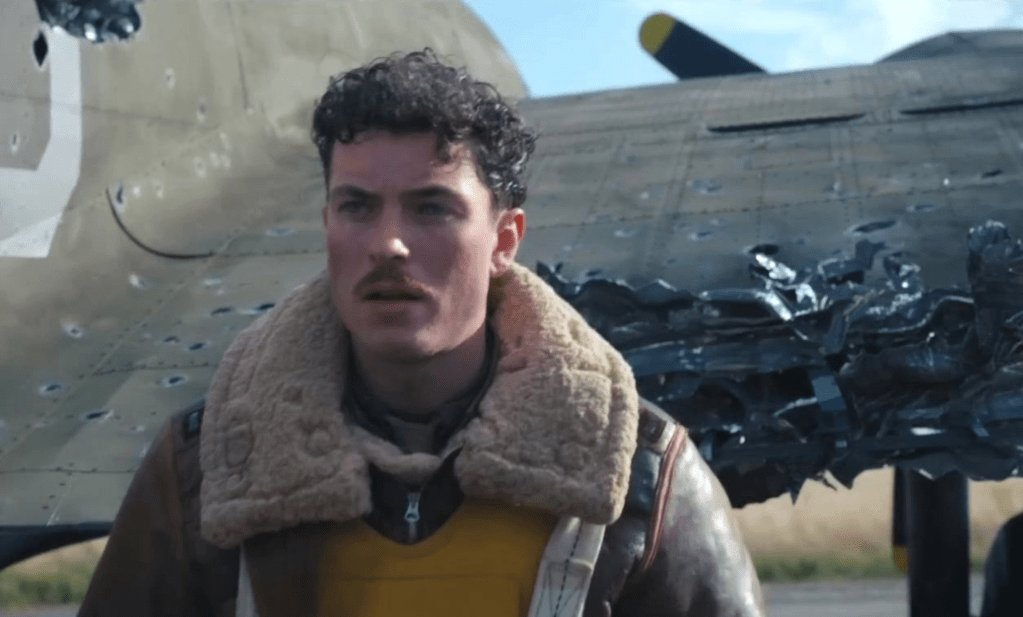
In my last post, I reviewed “Masters of the Air,” concerning the latest offering by Spielberg and Hanks in regard to the air war over Europe by the USAAF’s 8th AF. If you haven’t seen the review, it’s below this post.
It made me think of a connection I have to that bloody campaign, which ended the lives of many thousands of Allied airmen, Germans, and others. The guilty, and the innocent.
There was no one, as best I know, in my immediate family who served in those bomber streams. No, we sucked it through the steamy jungles and shitty islands in the Pacific for the most part. A few were in Europe, but once again, no one flew. Everyone walked. On a great day, they hitched rides.
But there was a little Frisian girl who lived on a small farm in Holland who saw that campaign. Her village had the misfortune to be fairly close to a large German airbase, about 46 km in a straight line. This was a few minutes flying for a fighter. The drone of the machines overhead, the massive banks of contrails, the thunder at night. Sometimes flashes, or brilliant streaks of fire. These were parts of her day-to-day life.
On a day in July of 1942, there was a tremendous crash and fire in the fields behind her house. Everyone went and looked- an Allied bomber was smashed up in a smoking ruin, black smoke choked the area, the flames roared higher than her house. Chunks of the fallen aircraft were strewn about; everyone knew the Germans would be there soon.
The villagers weren’t wrong. The Wehrmacht, or more likely the Luftwaffe, showed up in force and cordoned off the crash site. They took what weapons they could find and any parts of the aircraft that might be useful for intelligence. The rest they left for the villagers to deal with. By the way, the penalty for taking weapons, if the villagers cared to do so, was summary execution. The Germans made that clear.

The villagers laid the dead airmen to rest. These were their graves, shortly after burial, in 1942. As you can see, the villagers didn’t just dump them into a hole.
My Mother in Law, now an old lady, thought it important to show me these graves when I visited in 2017. These airmen lay there still, amongst the villagers who buried them. Mem’s little sister, Margje Postma, lays but a few meters away, dead in 1955 of leukemia. The four white stones hold pride of place at the back of the cemetery, meticulously maintained by the descendants of the people who watched them die.

The cost was real. The living memories remain.
In the bleak winter of 1944/45, she was nearly killed as she rode her bicycle, part of that same air campaign. She crossed a bridge and heard a roar, a fighter-bomber blew the bridge behind her sky high. Germans searched the village for Resistance fighters, collaborators snitched people out. They disappeared, many never to return. Eventually, the cruel winter ended, and she watched the Wehrmacht go home, either on stolen bicycles or on foot. The killing didn’t stop until the last soldier left, in the second week of May, 1945.
Canadian soldiers eventually reached her village. The eight-year-old’s war was finally over, and she never saw a bomber again.
In 2024, however, if asked— she hears them still.
This. This was the air war.



